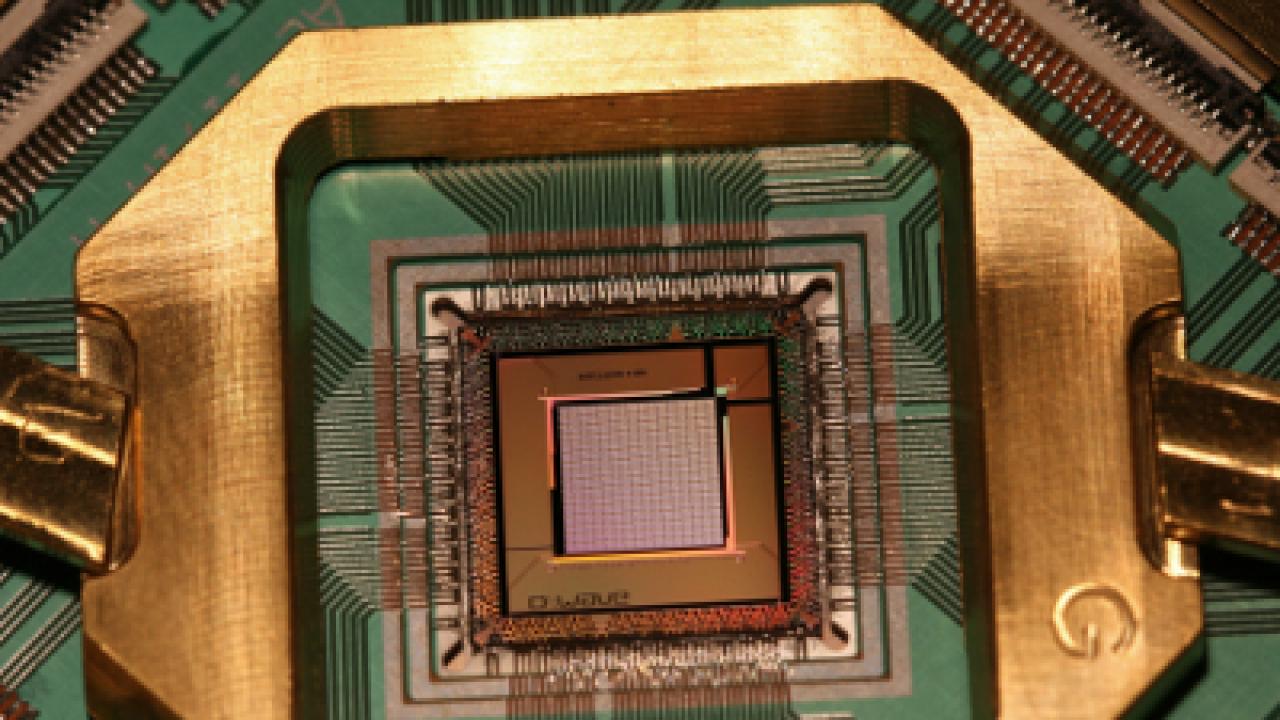
Quantum computing is the technology that many scientists, engineers and companies expect to boost the capabilities of tomorrow’s high performance computers. This promising field of research represents a cutting-edge approach, by exploiting the peculiar rules of quantum mechanics to process information in ways that are impossible on a standard computer. Among the different possible prototypes and solutions proposed, a specific device called adiabatic quantum computers seems to combine the potentiality in computing power with a ready-to-use technology.
For this reason, ICTP recently hosted the Workshop on Theory and Practice of Adiabatic Quantum Computers and Quantum Simulation (22-26 August), gathering together physicists and computer scientists to discuss the theories and computational methods for disordered quantum systems and machine learning devices. The aim of the meeting was to provide better knowledge on the potential efficiency of adiabatic quantum computers, examining under which conditions they could outperform classical devices. In particular, the workshop investigated which physical processes limit the efficiency of adiabatic quantum computers, and how algorithms may be specifically designed for these devices -- providing a speed-up for some specific, but interesting, computational tasks.
In traditional computers, electricity can flow through circuits and transistors: if the switch is closed the electricity flows, and vice versa. To process real-world data, these computers use a binary coding system, where 0 and 1 represent closed and opened states of circuits. These transistors, or bits, in classical computers are becoming extremely small and they cannot be further miniaturized, so the speed of classical computers cannot improve any further. Conversely, qubits represent the counterpart in quantum computing to the bit of classical calculating. In a quantum computer a number of elementary particles, such as electrons or photons, can be used with either their charge or polarization corresponding to 0 and/or 1.
“Adiabatic quantum computing exploits a specific type of quantum process termed quantum annealing, working on the lowest level of energy possible -- or ground state,” explains Sebastiano Pilati, post-doctoral researcher in ICTP’s Condensed Matter and Statistical Physics section and one the event’s local organizers. “To figure out how it works, imagine slowly changing a property of your device. If this change is done slowly enough, the system remains in its ground state, a process that can be exploited to perform certain useful computation tasks by encoding them into the transformation from the initial to the final ground state.”
One of the main achievements of the workshop, according to Pilati, is bringing together a new community of scientists--such as physicists trained in fundamental matter of condensed matter physics, computation physicists to develop better program algorithms, and experimentalists to implement hardware--all focused on a common problem. “For many of the participants, the main interest was trying to figure out a specific application, or problem, in which an adiabatic quantum computer might be very useful and superior to a classical computer,” says Pilati. “However, understanding whether these machines are working properly, doing what they are programmed for, is less trivial than it might seem to be at first glance, because of the difficulties in simulating a quantum computer with a classical machine.” In order to understand whether these systems can work, explains the researcher, we have to solve one of the fundamental problems in basic science -- such as predicting the dynamics of disordered quantum systems.
Big companies are also investing large amounts of resources to keep up with the improvements offered by quantum computers, as explains Sergio Boixo, a Google researcher in quantum A.I., and one of the workshop speakers. “Considering research at Google, we have two groups focused on experimental and theoretical tasks, and our work is focused principally on superconductive qubits,” says Boixo. “Our specific research area regards quantum annealers and quantum computers, and a great part of our job consists in trying to scale up these devices, focusing on their calibration and trying to reduce the possible errors.” Boixo says that racing against the most competitive classical computer -- for well-defined computational tasks -- is among the research goals. “Quantum devices are not toys anymore, and our next step will be to harness the computational power in order to solve practical problems.”
For instance, a promising technology able to exploit the potential of adiabatic quantum computers is digitized handwriting recognition, a task that combine both hardware knowledge and machine learning procedures. Algorithms to recognize digitized handwriting based on machine learning already exist on classical computers, processing and learning how to recognize different handwriting styles, using a given set of photos. Scientists are now trying to design analogous methods for adiabatic quantum computing, in order to make them more efficient. “Human handwriting is obviously not perfect, showing unique individualities, and it is not easy to teach a classical computer to recognize patterns and the texts’ meaning,” explains Pilati. “Adiabatic quantum computers can outperform classical calculators considering how fast they can sample and elaborate the large amount of input data. The preliminary results presented in this workshop are encouraging,” Pilati point out, “and the trained software will be able to recognize more than the simple set of loaded images!”
---- Alessandro Vitale













